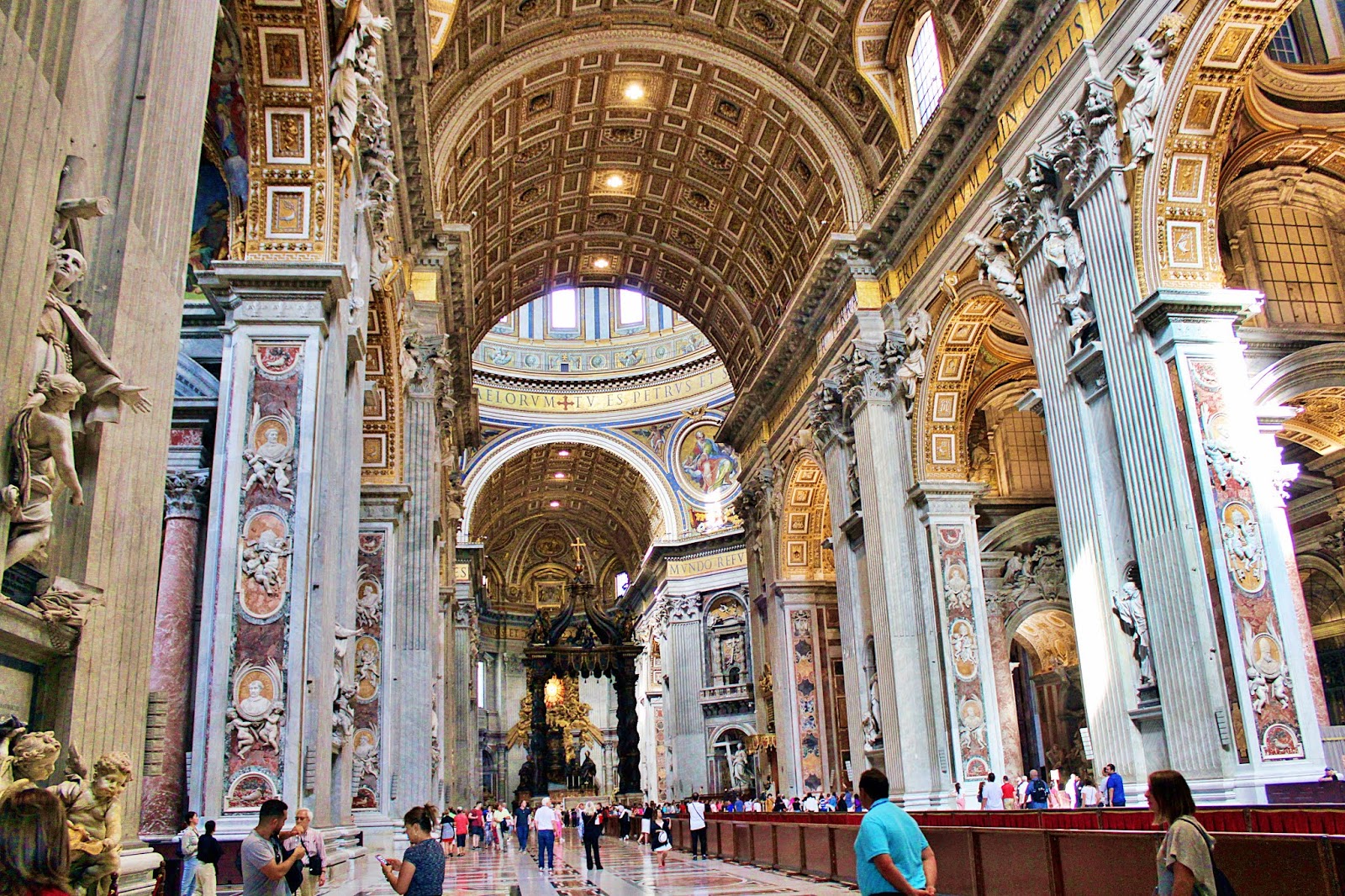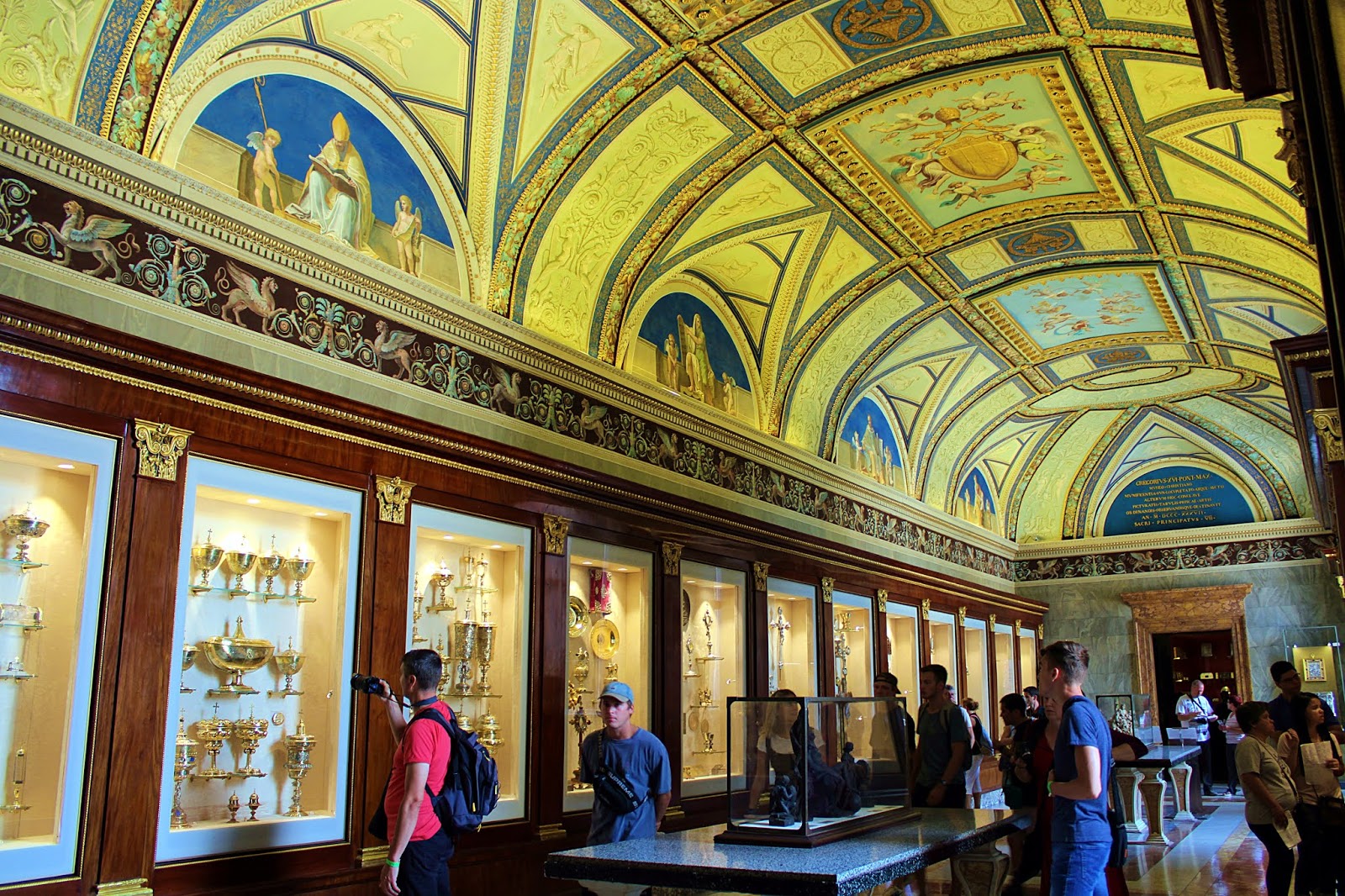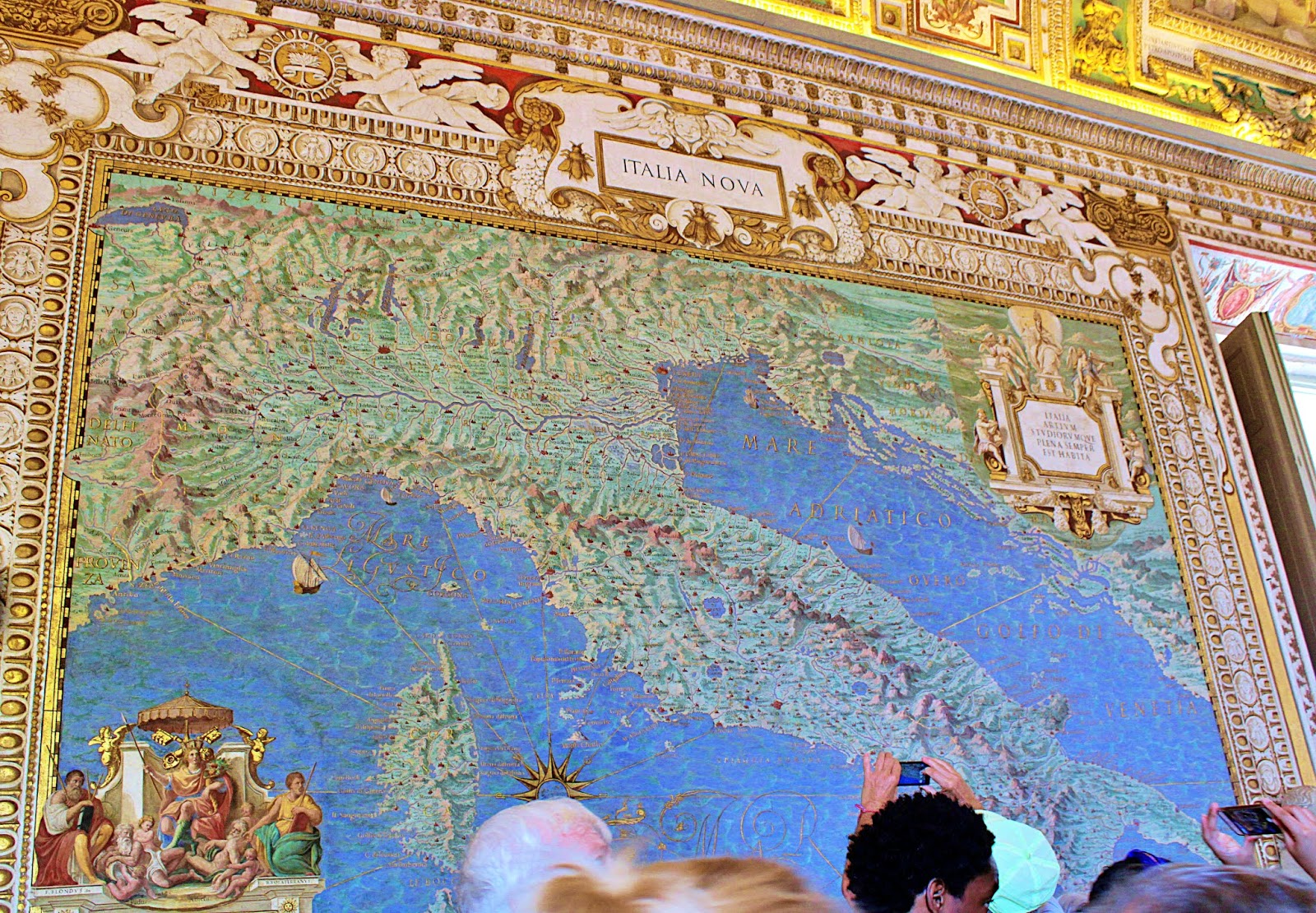 |
| 'The Last Judgement' by Michelangelo in Sistine Chapel, Musei Vaticani. Copyright mrscasonato, courtesy Musei Vaticani ( personal use only) |
As I am sipping my green tea with a slice homemade panettone and typing this post, my mind brought me back to Rome and Vatican City. How I love both cities!
I have dedicated one blog post about Rome only, and I guess you might wanna check it out. It'll give you a glimpse of how Roman is from a local tourist's perception. Hope it's helpful though.
Alright then, long story short, we visited Vatican City and its museum back in September 2018. I've lost words to describe how I love every inch of Vatican City. I am not a Catholic though, but I would give 5 stars out of 5 for everything about it. Wanna know why? Keep reading!
First of all, I'd like you to know that the Vatican is an independent city-state that ruled by the Pope, who is the Bishop of Rome and the leader of the Catholic Church as well. It adopted a theocracy in which The Pope has absolute power in Executive, Legislative, and Judicial branches over The Vatican, so in another word, he is an absolute monarch, the one and only in Europe.
Within an area of 110 acres, The Vatican has only a thousand inhabitants. It makes the Vatican the smallest city-state on earth by both the area and the number of population.
Apart from its unique form of government and geopolitical style, The Vatican is home to the world most precious cultural and art collections thanks to its library and museum. The Vatican Museums (Musei Vaticani) is one of the largest and the 5th most-visited art museum in the world.
The Vatican Museums exhibit an extensive collection gathered by Popes throughout the centuries including the most well-known and prominent Roman sculptures and major masterpieces of Renaissance art. They hold approximately 70,000 works that only 20,000 are on display.
The Museums were founded by Pope Julius II in the early 16th Century and some experts claim they could be traced back to the very first marble sculpture bought by Pope Julius that century. Laocon and his sons was bought from a vineyard owner in Basilica, Santa Maria Maggiore and later was put on display by Pope Julius a month after.
St. Peter's Square and Basilica
 |
| Courtesy David Ilif |
The very first thing you see once you step on Vatican city is the main square and its pretty enormous basilica. St. Peter's Square is the main plaza (piazza in Italian) in front of St. Peter's Basilica where Christians usually flock to enter Basilica and Museum.
There is an Egyptian Obelisk right in the center of the square erected in 1586. Gian Lorenzo Bernini designed the square hundred years after the construction of the obelisk, including the great Doric Colonnades.
St. Peter's Square and the basilica is like Mecca for Muslims and every day thousands of people gather and line up to enter Basilica which deemed as the greatest of all churches of Christendom.
If you're thinking of visiting St. Peter's Square and The Basilica is easy, you are wrong. Due to a high number of visitors which impacted in such a never-ending queue, the chance you get inside the basilica is pretty small unless you have booked the tickets beforehand or joining a group of pilgrimage (offered by tour and travel). You have to wait some hours in line with thousands of people ahead of you as well. My family and I were damn lucky if I may say because Dario holds a disability card. He is a member of Rare Disease Italy and for the law, he is free to enter every museums, zoo, exhibitions and his companion should only pay 50 percent of the ticket. In Vatican City, disabled people or people with certain illness (by showing the disability card or the verbale) can even avoid the lines and enter calmly with a special service provided by The Vatican staffs.
The Vatican staffs were really nice and helpful, they don't have a racist gesture towards non-Italian and non-European. My husband told me that Rome is the least racist Italian cities so it's not surprising that The Vatican staffs were so nice.
To enter St. Peter's Basilica, you need to follow the rules strictly applied to each visitor.
DRESS CODE: All visitors should wear an appropriate dress: Low cut or sleeveless clothing, shorts, miniskirts, and hats are not allowed.
PHOTOGRAPHY AND MOBILE PHONES: Photography is permitted for personal use only except in Sistine Chapel. Mobile phones should be in silent mode during the visit.
 |
| At the entrance of St. Peter's Basilica |
 |
| Once you enter Basilica |
 |
| beautiful frescos dated back to some centuries ago |
The Papal's Basilica or widely known as St. Peter's Basilica is actually the place where Jesus Apostle Saint Peter buried. He, as the first bishop of Rome, finds the eternity home below the high altar of Basilica along with others Popes.
St. Peter's Basilica is designed by Renaissance famous artist like Donato Bramante, Michelangelo, Carlo Maderno, and Gian Lorenzo Bernini. It is not exaggerating to state that this basilica is one of the greatest works of Rennaissance Architecture.
As I observed the interior of St. Peter's Basilica, I realized it has many altars and each serves a congregation on a different day. You can pray in wherever you feel you want to while you can also just wandering around and enjoy the arts, like myself.
Right below the altar, there is a burial site, which I believe could be the greatest one in human history and civilization, where all popes get their forever home. I was so overwhelmed. I never thought I could witness this place ever because it's so National Geographic sort of things. I am so damn lucky to see with my own eyes, the greatest burial site in Catholic History. Unfortunately, I couldn't take any photos because it's strictly forbidden to take any pictures. People usually visit this place as a pilgrim, to pray and ask blessings, it would be inappropriate too, in my opinion, to take pictures of a burial site.
The entrance of the burial site can be accessed from inside the basilica but you have to be aware that the exit will lead you back to the outside. Once you enter the burial site and manage to exit, you have to reenter the basilica. I got a bit lost after I finished short sightseeing in the burial site and the fact that we couldn't use a cellphone got me mad. Luckily I could find my way back to my husband and my son.
We spent like an hour and a half in St. Peter's Basilica and we committed not to spend more because the next place needed more time to enjoy. Yup, Museums. Vatican Museums or Musei Vaticani in Italian. These museums are amongst the greatest and oldest in the world with the extraordinary collections dated back to 12.000 BC.
Vatican Museums and Their Magical Charms.
Musei Vaticani is one of the oldest museums on earth. Founded in the 16th century, to be exact 1506, this Christian and Art Museum has an immense collection of Arts (paintings, sculptures, frescoes, artifacts etc) throughout the centuries.
To enter Vatican Museums, you have to buy the tickets or book them beforehand. It is said to cost you 19 euros per person for Vatican Museums and Sistine Chapel. Anyhow, we got a free pass (skip the line) because we had the Disability card of Dario with us. For the law, Dario should get a free pass and the accompagnatore should get 50 percent off. We were really happy we could skip the line because it seemed so impossible to get into the museums because the line was some kilometers away.
We realized that visiting the Vatican is actually so much easier if we got the tickets from tour groups. We could also get a licensed tour guide. Vatican Museums are damn huge and I think having a decent tour guide that explains every inch of the Vatican must be really exciting.
Alright then, when we first entered, I was so overwhelmed. I said to myself: "Shoot, one of my wildest dreams come true, I am shook"!
THIS PLACE IS BEYOND MAGNIFICENT!
The very first thing, you'd see once you entered the museum is the spiral staircase known as Bramante Staircase designed in 1932 by Giuseppe Momo. As I researched more about this double helix staircase, I found that the original Bramante Staircase was designed by Donato Bramante in 1505. It is said to have been built to provide easier access for the Pope to go in and out of the museum (Pio-Clementine)
 |
| Bramante Staircase courtesy Antony Figueras |
As we flabbergasted seeing the double-helix Bramante staircase, we soon had to decide which museum we had to visit first. We then randomly picked Gallery of Maps to visit first. Ah yes, as we were heading to Gallery of Maps, we saw a lot of roman marbles and art collections.
This party of the museum has so many doors (I guess other parts have many doors too), and each of them would lead to another section of the museums. Anyway, we just follow the path while at the same time looking on the maps of the building. we tried to enjoy and not to get lost.
Gallery of Maps
 |
| Gallery of Maps |
 |
 |
| we can see pope legacy and accessories here |
It is said that though these maps are quite antique, they are actually pretty accurate. The accuracy rate is 80 percent. Shut up!
Take a look at these two maps of Old Italy and New Italy:
We spent like almost two hours in this Gallery, then we headed to Raphael's room and then went visiting Sistine Chapel. We thought that would be an easy-peasy, instead, pfiuhh.. the path through one gallery to another is quite complicated. We regretted that we didn't hire a licensed tour guide... regrets always come late...
We got lost in the middle of the way because we followed through the indication to Sistine Chapel via the original paths and stairs (instead of the modern one via elevators). So instead of going to Raphael's room, we endured the long pilgrimage paths that lead to Sistine Chapel. Both Raphael's Room and Sistine Chapel are highly appreciated thus it's no surprise that the paths to get through them are complicated, probably to make sure visitors witness all the collections.
Sistine Chapel
It is the chapel inside Vatican Museums where the Papal Conclave took place. The papal conclave is the process by which the new pope is selected. This place used to be the residence of the early popes and then now functioned as both religious chapel and functionary papal activity room.
Sistine Chapel is famous for its renaissance paintings both on the wall and on its ceilings (frescoes) painted by numerous renowned Renaissance painters such as Sandro Botticelli, Pinturicchio, Pietro Perugino, Domenico Ghirlandaio, Cosimo Roselli and of course Michelangelo. In 1482 the paintings of 'The life of Moses' and 'The Life of Christ' were completed by the first five painters (minus Michelangelo).
In between 1535 and 1541 Michelangelo accomplished the greatest project of the history of human civilization: The Last Judgement. The Last Judgement is considered to be the most beautiful frescoes ever existed in the history of Western art and it has drawn billion of visitors to Sistine Chapel since it was first revealed.
 |
| The last judgment frescoes |
 |
| Sistine Chapel |
I couldn't believe my eyes when I saw this antique chapel adorned with massive beautiful giant frescoes. Chapeau!!! These frescoes are so captivating as if they were made to be worshipped for their pure grace. I could feel a serenity that is the Sistine chapel where Catholic Pilgrims pray upon the highest for blessings and mercy.
This Chapel deserves all the praises and compliments. I wish I had words to describe how mesmerizing is this place, but I didn't.
To be continued...
PS: All pictures are mine unless I indicated otherwise. Thank you...
















No comments
Post a Comment